As a reminder, the region lost its independence after the city of Barcelona fell to Philip V of Spain and became one of Spain’s twenty-seven autonomous communities.
During this time, Catalonia kept several privileges: its language (Catalan), its police (the Mossos d’Esquadra), and its government. Today, Catalonia represents around 20% of the country’s GDP. As a dynamic region, it accuses Spain of draining its wealth by refusing to give it control of its taxes. 2012 marked a turning point after the Spanish government rejected a fiscal agreement intended to solve this problem. The Catalan President at that time, Arthur Mas, then announced a new policy: to construct a sovereign Catalan state. The historically autonomist demands thus turned into separatist demands of complete independence.
Between 2010 and 2017, the proportion of residents in favour of independence grew from 15% to 40%. On the basis of these figures, in June 2017 Arthur Mas’ successor, Carles Puidgemont announced a referendum on the question, “Do you want Catalonia to be an independent state in the form of a republic?”. On 1st October 2017, the “yes" side won with 90%, with a participation rate of only 42.3%. The Spanish government declared the vote “illegal” and “unconstitutional” and sent 10,000 police and civil guards to seize the electoral material. This violent response of the Spanish state injured close to a thousand. One month later, according to referendum bill, the Catalan Parliament declared Catalonia independent. Immediately afterwards, the Spanish government triggered article 155 of the Spanish Constitution, putting the region under the administrative supervision of Madrid.
A new era of negotiations?
Since the referendum, the situation seems to have cleared itself up. On the Spanish side, the conservative Mariano Rajoy stepped down from his role as Head of Government after being subject to a vote of no-confidence, being replaced by the socialist Pedro Sanchez. The latter quickly announced his intention to “re-establish normality” after the attempted secession of 27th October. This replacement also coincided with the end of the administrative supervision of Catalonia, on 1st June. On the Catalan side, Quim Torra succeeded Carles Puigdemont (who was exiled in Belgium).
Since June, the new Prime Minister and the Catalan President have agreed to restart the Bilateral Commission for cooperation between the two governments, called the State-Generalitat, whose work had been disrupted since 2011. As tensions seemed to start dissipating, Pedro Sanchez accepted to withdraw the appeals against several social laws made by Mariano Rajoy’s People’s Party to the Constitutional Court and declared his intention to respond to Catalan demands around investment and finance. He also authorised putting separatist leaders in preventative custody in Catalan prisons, without dismissing the charges against them.
While the situation has calmed down, the Spanish government is maintaining a clear approach; there is no margin of negotiation possible for Catalan’s self-determination, as the right to self-determination is not recognised in the Spanish Constitution. In 2017, the Prime Minister supported the administrative supervision of Catalonia, a measure he considered “reasonable”, and that he “wouldn’t hesitate to use if necessary”.
So, independence no longer seems to be on the cards, but Pedro Sanchez continues to extend a hand to the separatists that helped him get into power. On the 3rd of September, with the support of radical left-wing party Podemos, he proposed holding a consultative referendum on a new status for the region which could result in giving the region more autonomy. This was swiftly rejected by separatist leaders who felt this offer was too little too late, and that “the process of independence is irreversible”.
The political prisoners: “a cohesion-building factor for separatism”
The situation of the political prisoners remains one of the main points of contention between separatists and the Spanish government. Following the referendum, thirteen separatist leaders were accused of “rebellion” and nine of them are in temporary custody at Lledoners Prison in Catalonia. In jail currently is Jordi Cuixtart, former president of the separatist association Omnium Cultural; Jordi Sanchez, ex-president of the Catalan National Assembly (ANC); Oriol Junqueras, former president of the Catalan government and president of the Republican Left of Catalan (ERC); and Carme Forcadell, ex-president of the regional parliament. Four other leaders, including Carles Puigdemont, fled into self-imposed exile. Puigdemont was arrested in Germany subject to a European Arrest Warrant, he narrowly escaped being extradited for “misuse of public funds”, when the German court rejected the charge of “rebellion”.
His less fortunate co-leaders could face a 25-year prison sentence. The trial’s outcome is especially important for the separatist leaders, for whom the prisoners’ release has practically become a call to arms. For several months, Catalans have been hanging yellow ribbons across cities as a symbol of support for the prisoners, and banners reading “Llibertat presos politics” (free the political prisoners) are increasingly seen in windows. The Catalan national holiday, la Diada, on 11th September was dedicated to them. Like the previous year, about a million people gathered for the event. For Michel Iceta, leader of the Catalan Socialist Party, “the main thing bringing separatists together is the imprisonment of these leaders”.
A divided Catalan population
Catalans, therefore, seem united against the repression they have had to endure, and still do after the referendum of 2017. La Diada and the anniversary of the referendum - widely celebrated on the first of October on the streets of Barcelona - are proof of this solidarity. But there is still a split between people who are for and those who are against independence. This division is visually evident in what the Spanish press has dubbed the “war of the yellow ribbons”. These symbols, tied to buildings, trees, and the fronts of houses by separatists, are not taken kindly by unionists, who take them down. This has led to violence in the streets on a number of occasions. Regional elections demonstrated a similar split of votes into the two groups. Separatists including Together for Catalonia (JxC), ERC and Popular Unity Candidacy (CUP) won 47.5% of the vote, compared to 43.3% for their opposition: the Citizen’s Party Ciudadanos, and the People’s Party.
There is even a divide among separatists, between the moderate ERC, and the radicals. In May, when Catalonia was under administrative supervision, the moderates asked Quim Torra to stop rebelling, to get institutions working again and form a government that will respond “to the Catalans’ problems, whether they are separatists or not”. For his part, Quim Torra, who called Catalans to “occupy the streets and create the Republic”, has calmed down since Pedro Sanchez came to power, to promote a dialogue. This U-turn upset radicals who accuse the new president of taking a softer “autonomist approach”.
“On this day of hope and suffering, Catalan citizens gained the right to have an independent state under the form of a Republic”, announced Carles Puigdemont on the evening of the vote on the 1st October 2017. Independence, though within spitting distance one year ago, today seems far-off and utopian. And though the motivation for it does not seem to have lessened, disillusionment is definitely present. In the words of Abert Tello, Catalan archivist, reported by Sandrine Morel in Le Monde: “It seems that they only seek to negotiate. That it was all a bluff. There isn’t a plan anymore.”
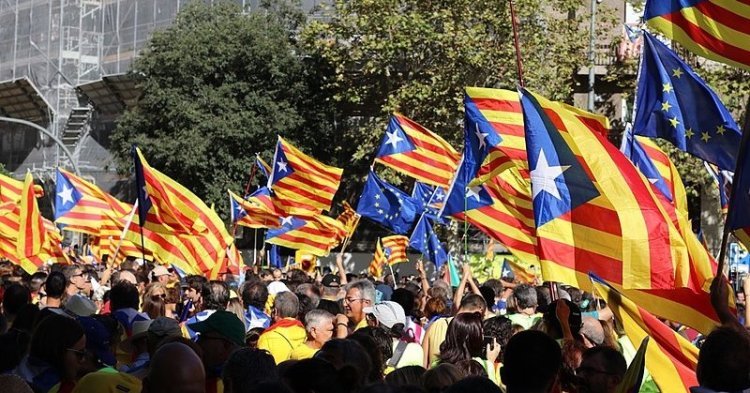



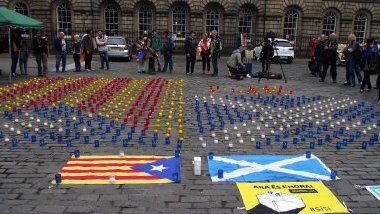
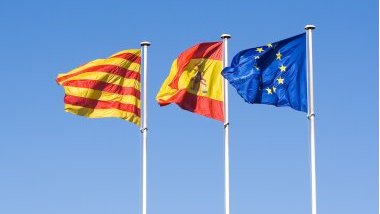
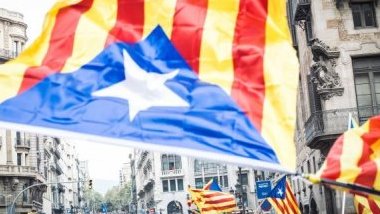
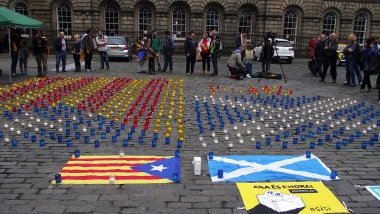
1. On 22 November 2018 at 15:05, by Pablo Replying to: Independence for Catalonia: a look back on a year of disillusionment
Replying to: Independence for Catalonia: a look back on a year of disillusionment
Very surprised to see so many upfront mistakes in the article and unrigorous statements. Just some examples.
– Catalonia was not independent before “Barcelona fell to Phillip V of Spain” in 1714. Until 1700, the Habsburg dinasty ruled in the kingdoms of Spain (Spain as a political entity did not exist, but it was composed of several kingdoms, basically Castille, the Crown of Aragon, which was composed of several kingdoms). Catalan teritories belonged to the Crown of Aragon and they were not even a kingdom. In 1700, Carlos II, an Habsburg king ruling in Spain, died without offspring. An European war broke up between the two main european royal houses, the Habsburg (Germanic) and the Borbon (French). The war was finally won by the Borbon dinasty so Phillip d’Anjou, nephew of the French King Louis XIV, was appointed as King of Spain under the name of Phillip V. The point is that the Catalan nobles had provided support to the Habsburg candidate during the war so the new king punished and they lost their privileges. In addition, Philip V set a unified scheme in Spain (adopting the French model and abolishing most of the governing bodies and laws of the different territories of Spain. The most important thing to be understood is that this was an European war, not a Spanish civil war, and it had nothing to do with the independence of Catalonia.
– In Spain there are 17, and not 27, Autonomous Communities. In addition, according to the text it seems that they were set when Phillip V ruled in Spain, in the first half of eighteenth Century. But this is not the case. The Autonomous Communities were set from 1978 (some of them few years after this date), when the current Spanish Constitution was passed and entered into force.- “Unionists” use to claim that Catalonia has never been independent. This is almost true but not exact. in 1640 a rebel broke out in Catalonia against Castillian but also against Catalan nobles. This had the effect that Catalan Republic (sic) was declared. However, its ruling leader, Pau Claris approacehd to the French Crown to seek protection so Catalonia fell under French sovereignity. However, 1n 1652 the rebellion was finally suffocated, France and Spain signed the “Peace of Pyrenees” Treaty and Catalonia turned back to be under the King of the Spanish territories, except a part of the territory called “Roselló” which has remained until nowadays part of the French territory.
– There is a controversy about if the term “political prisoners” can be used to refer to the pro independence leaders. In fact, according to the main Human Rights organizations, they are not political prisoners and in Spain the rule of law is applied, although some of these organizations have complained about the fact that they are still in prison even if they have not been judged and said that this is an unjustified situation. The author should be more careful when using this term because she may be adopting the language of one of the parties involved.
Follow the comments: |
|
